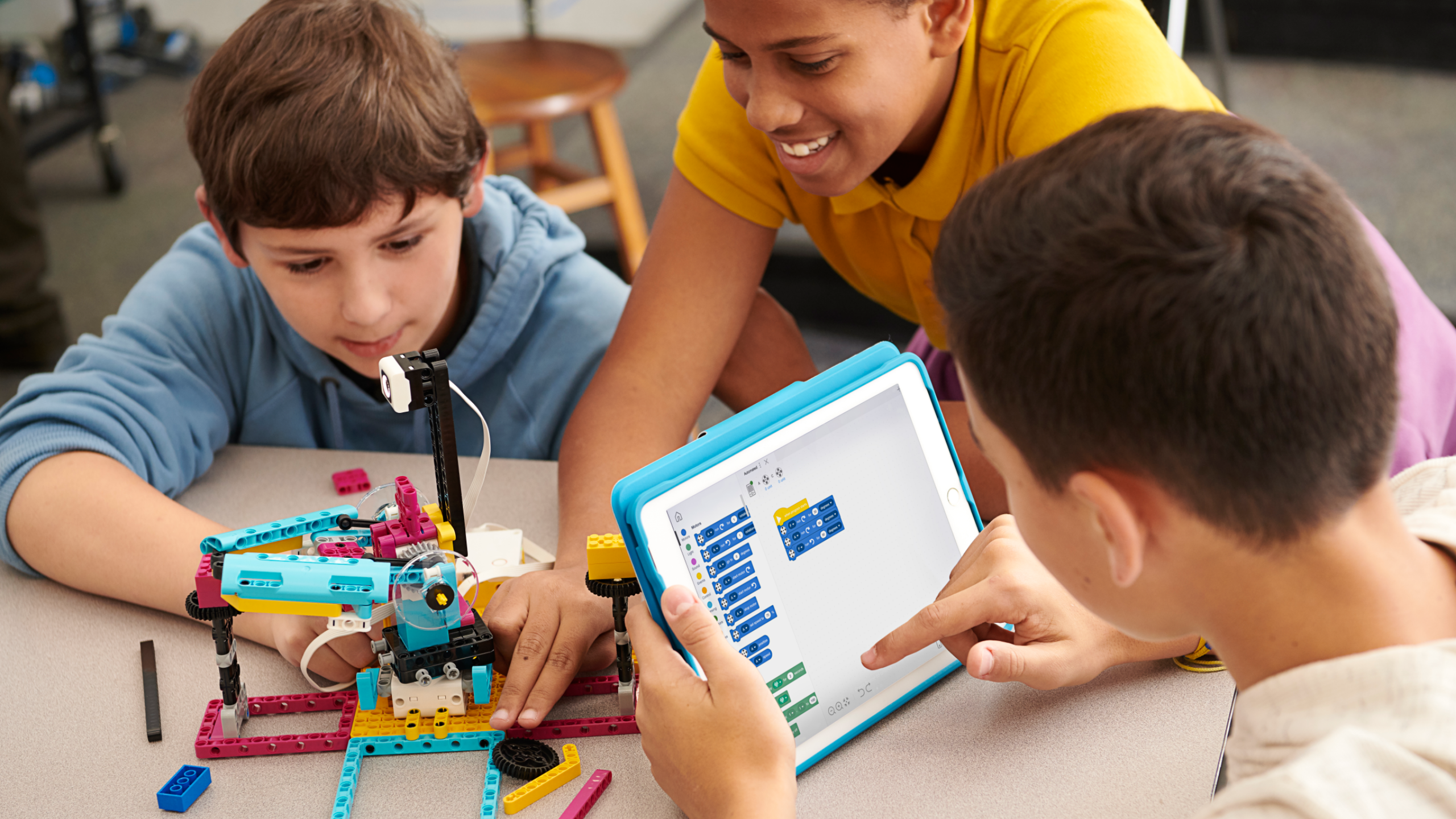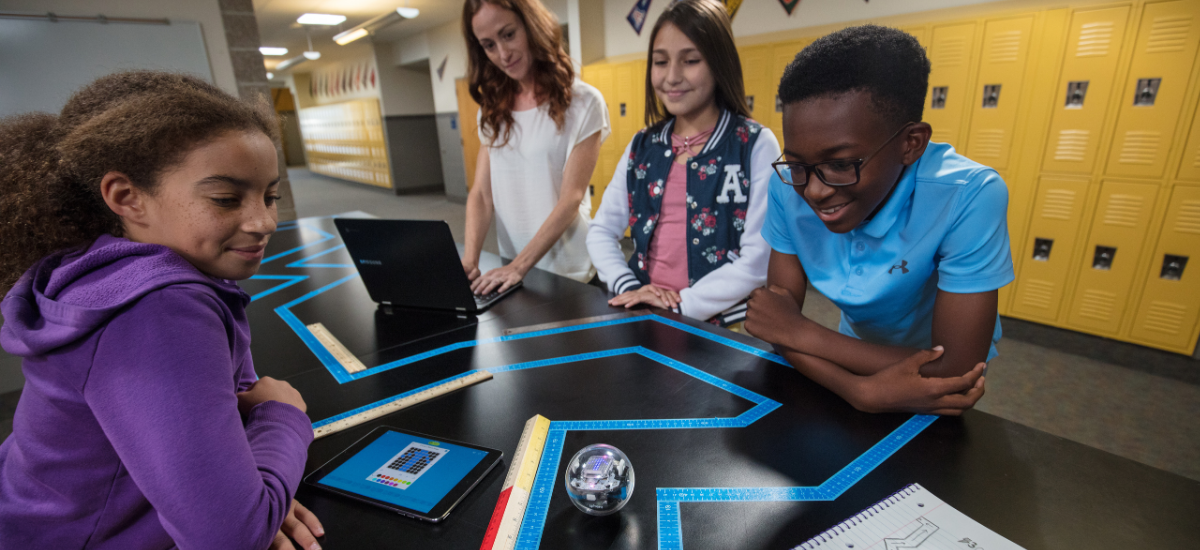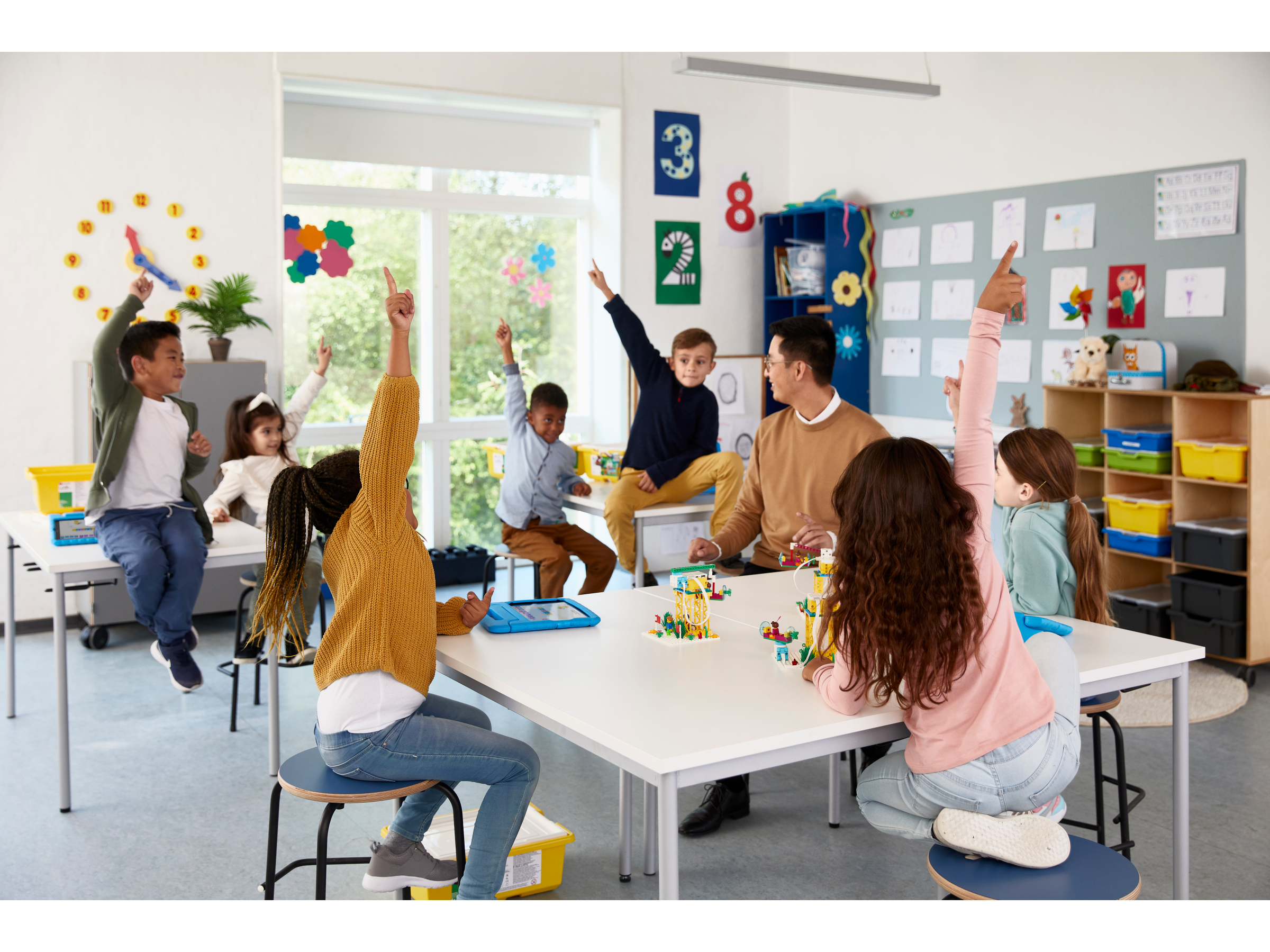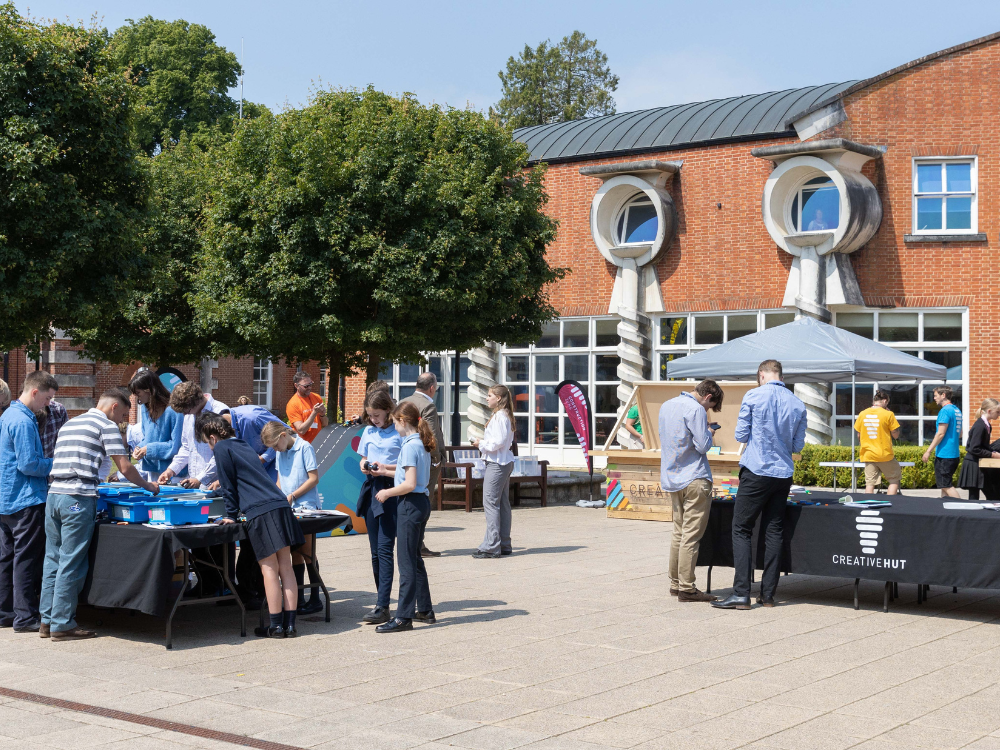Ireland’s Primary Curriculum Framework 2023 and Junior Cycle reforms highlight the importance of STEM, computational thinking, and active, enquiry-based learning. LEGO® Education SPIKE™ Essential and SPIKE™ Prime empower teachers to deliver these new goals through practical, play-based learning that connects science, engineering, technology, and problem solving.
Here’s how each SPIKE set supports Ireland’s new curriculum strands - with real classroom activities that meet national outcomes.
SPIKE Essential - For the New Primary STEM Curriculum (Ages 6–12)
SPIKE Essential introduces coding and engineering through enquiry-based learning that connects naturally with the Scientific Inquiry, Computational Thinking, and Design & Make strands, while also supporting the seven key competencies outlined in the Primary Curriculum Framework — including being a digital learner, an active citizen, and a creative thinker. Each lesson encourages children to ask questions, investigate, and design solutions, which are key features of the enquiry-based learning framework.
Scientific Inquiry Strand
Curriculum Goal: Encourage curiosity and questioning through investigation.
Activity Example: Design a Fan to Cool a Character – Pupils explore how changing motor speed alters air movement. They ask questions, make predictions, and observe results, fulfilling inquiry-based learning objectives.
Computational Thinking Strand
1) Curriculum Goal: Understand sequences and logical steps in problem solving.
Activity Example: Rescue Robot Mission – Students program a robot to navigate around obstacles to “save” a mini-figure. They plan algorithms, identify patterns, and debug errors.
2) Curriculum Goal: Represent solutions as algorithms and test them.
Activity Example: Mail Delivery Route – Pupils create a code sequence to deliver letters to specific houses on a map, predicting outcomes and adjusting routes based on feedback.
Design & Make Strand (Engineering and Technology)
1) Curriculum Goal: Apply design thinking to create functional solutions.
Activity Example: Automatic Pet Feeder – Students build a model device to feed a pet at intervals. They brainstorm, design, prototype, test, and refine — following the design cycle embedded in the curriculum.
2) Curriculum Goal: Use digital tools to prototype ideas.
Activity Example: Moving Storybook Scene – Children animate a LEGO scene using motors and code, integrating creativity and technology.
Maths & Integration Across Subjects
-
SPIKE Essential lessons naturally embed maths skills: measuring movement, timing intervals, and collecting data on distances or rotations.
-
In literacy, pupils can narrate their projects, describe processes, and present findings — connecting STEM with communication.
Supporting the Digital Learning Framework (DLF) and School Self-Evaluation (SSE)
SPIKE Essential is a powerful tool for schools engaging with the Digital Learning Framework and School Self-Evaluation processes.
-
It supports Theme 2: Learner Experiences by promoting creativity and active use of digital tools.
-
It enhances Teacher Practice by encouraging innovative methodologies such as enquiry-based learning and the engineering design process.
It provides clear evidence for SSE focus areas in STEM and Digital Learning, showing progression in pupil skills and engagement.

Curriculum Integration and Key Competencies
SPIKE Essential supports the integrated nature of the Irish Primary Curriculum, embedding connections across:
-
Mathematics (measuring, estimating, and analysing data)
-
Literacy (communicating findings and presenting projects)
-
Digital Learning (creating, collaborating, and using technology purposefully)
It also aligns with the seven key competencies of the Primary Curriculum Framework (2023) — particularly Being a Digital Learner, Being a Creative Thinker, and Being an Active Learner.
Teacher benefit: One SPIKE lesson can support learning across multiple curriculum areas, saving planning time and deepening pupil engagement.
Learning Outcomes with SPIKE Essential
By the end of primary, pupils can:
-
Explain what algorithms are and how to use them.
-
Apply scientific investigation methods.
-
Build and code simple mechanisms.
-
Collaborate effectively to solve problems.

SPIKE Prime - For the Junior Cycle and Transition Year
SPIKE Prime bridges the gap to secondary, supporting Junior Cycle Coding, Science, Engineering, and Mathematics strands.
Junior Cycle Coding Short Course
1) Learning Outcome: Develop computational thinking and design solutions using code.
Activity Example: Smart Traffic Lights – Students design a system where sensors detect colour changes or vehicles. They apply “if-else” logic, loops, and variables, reinforcing conditional logic and control flow.
2) Learning Outcome: Use text-based programming languages.
Activity Example: Python Line-Follower Challenge – Learners transition from block coding to Python, programming their robot to follow a route autonomously.

Science and Technology Integration
1) Learning Outcome: Investigate real-world systems and energy transfer.
Activity Example: Bridge Stress Test – Students design and test a bridge model, measuring force with SPIKE Prime’s Force Sensor. They record and analyse data, linking technology to scientific inquiry and physics.
2) Learning Outcome: Understand how systems interact in technology.
Activity Example: Smart Farming Prototype – Students build an automated gate that opens when a Color Sensor detects a tractor. They discuss automation’s role in sustainable farming — tying into STEM and geography themes.
Mathematics & Engineering Applications
1) Learning Outcome: Use data and relationships in context.
Activity Example: Gear Ratio Experiment – Calculate ratios between gear sizes and observe their effect on speed and torque, linking to algebra and proportional reasoning.
2) Learning Outcome: Design, build, and evaluate prototypes using problem-solving and iteration.
Activity Example: Robot Arm Engineering – Students prototype an automated arm to pick and place blocks, reflecting design process stages and teamwork outcomes in Engineering and Transition Year projects.
Transition Year and Beyond
SPIKE Prime is an ideal fit for TY modules in Robotics, Coding, or Design Thinking. It also aligns with Senior Cycle Computer Science principles such as algorithm design, abstraction, and system control.
LEGO Education SPIKE Prime: Unlocking Computational Thinking in the Junior Cycle Classroom
The new Junior Cycle framework encourages an integrated, skills-based approach to teaching and learning, emphasising creativity, problem-solving, and computational thinking across subjects. LEGO Education SPIKE Prime is an ideal tool to support these competencies, giving students hands-on experiences that develop STEM skills in a fun, interactive way.
Learning Outcomes with SPIKE Prime
By the end of Junior Cycle, students can:
-
Apply computational thinking and programming to real-world tasks.
-
Investigate, record, and analyse scientific data using sensors.
-
Work collaboratively to design, build, and test engineering solutions.
-
Demonstrate digital creativity and innovation.
SPIKE Essential and SPIKE Prime perfectly reflect Ireland’s vision for modern STEM education — connecting curiosity, coding, and creativity across every stage of learning.











Share:
Discovering Dyslexia: A Journey of Understanding, Hope and Hands-On STEM Support
Building Skills, Building Futures: How LEGO® Education SPIKE™ Connects CSR to Real-World Industry Impact